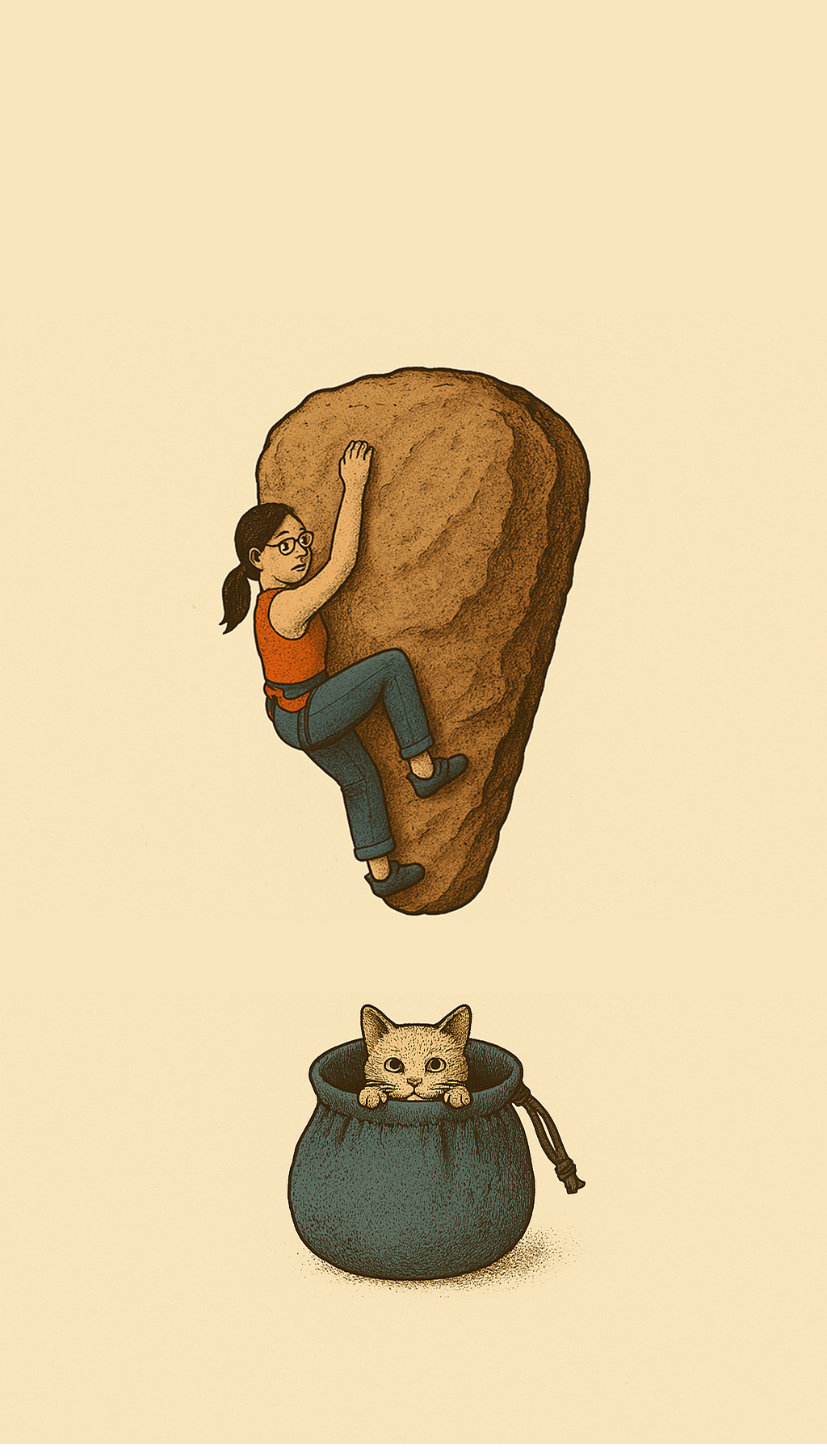Polish Your Climbing Perception: The Art of Rest Day Practice
Climbing performance isn’t just about pulling hard. It depends on our ability to perceive features in 3D space, with all our senses—internal and external—then process those perceptions into movement goals, and finally execute them.
This continuous cycle—a waltz of sensory input, processing, and motor output—defines our movement quality, our moments on the wall, and our mastery of both mind and muscle.
Why Perception and Processing Matter Most
The real uniqueness of climbing lies in the first two stages:
1. Perception — noticing features, textures, angles, relationships in space.
2. Processing — translating those observations into plans and intentions.
These precede the spectacular pounces, pendulums, and precarious perches that give climbing its distinctive style.
And here’s the best part:
Perception and processing can be trained anywhere. Anytime.
You don’t need a wall. You don’t even need to move much. You can build your climbing vision and mental vocabulary even on rest days, with just as much focus as you’d use during a hard session.
The Climbing Vocabulary Sensory-Motor Meditation
A simple, flexible drill you can do wherever you find yourself.
Ground Yourself in Your Surroundings
Sit, stand, or lean—wherever you are.
Feel the surfaces supporting you.
Notice them through sight and touch.
Verbal version: Name the climbing techniques you'd use at these contact points (e.g., smear, gaston, undercling, layback).
Embodied version: Subtly exaggerate the force or body position as if climbing (without needing to actually move far).
2. Expand Your Field of Awareness
Look at features in your environment you aren’t touching.
Ask: If I had to climb on that, what technique would I use?
Name it. Or, if you can, make contact and engage your sense of touch, completing the imagined move.
This turns the ordinary world—railings, walls, bus seats, tree trunks—into a training ground for your climbing vocabulary and sensory-motor imagination.
3. Flexible Start and Stop
There’s no formal beginning or end.
Waiting for a bus? Use those minutes.
Early for a meeting? Turn the spare time into practice.
Stuck in traffic? Even seated, you can visualize and name techniques.
Life’s transitions set the boundaries of this practice for you.
The Big Idea
Life is full of climbing—even while your body rests.
By inhabiting the mind and senses of a climber at all times, you can turn every day into an opportunity for embodied mental practice.
Even when you’re off the wall (especially if you are off the wall), you’re still climbing—when you begin to see the world that way.
